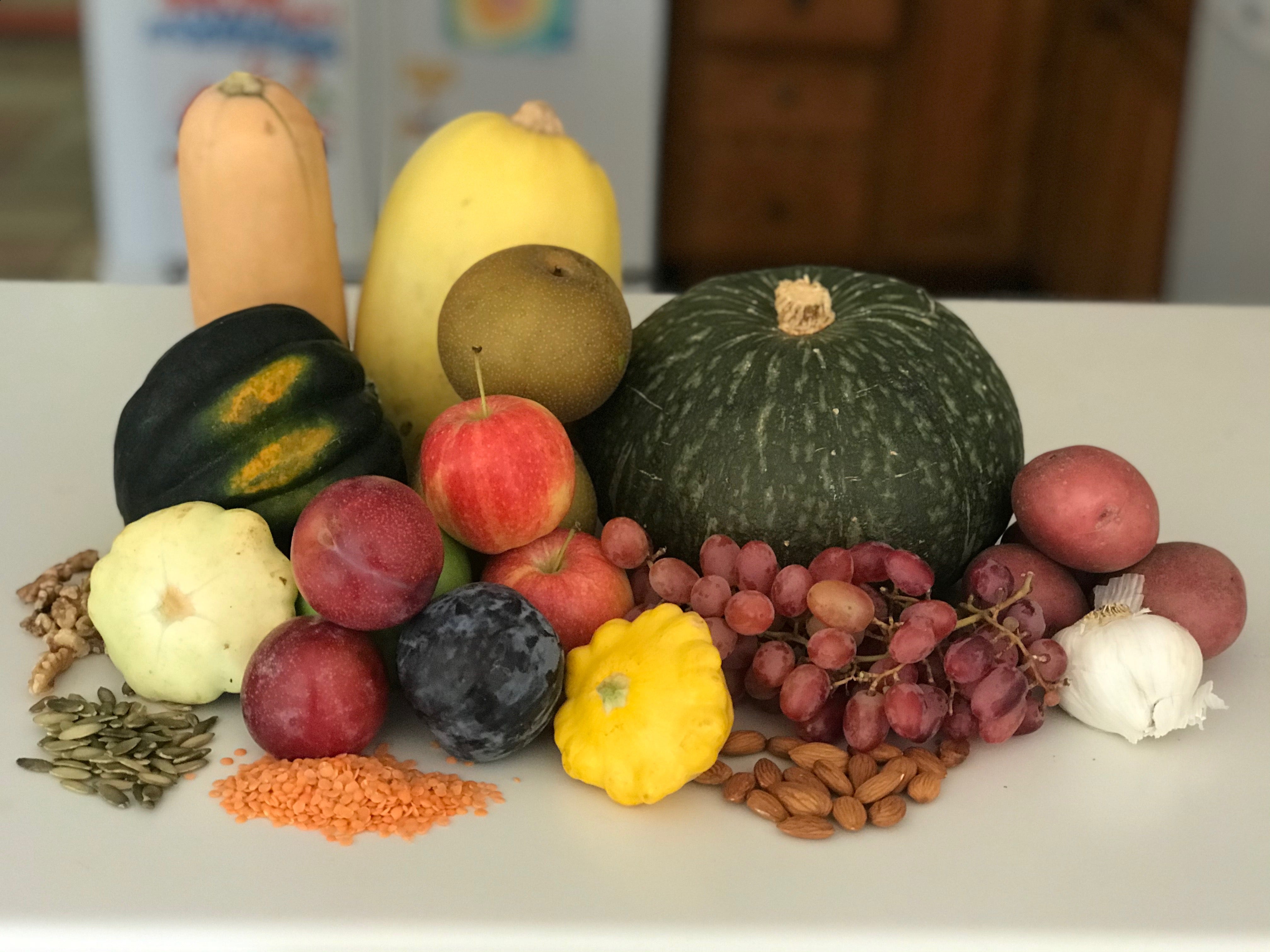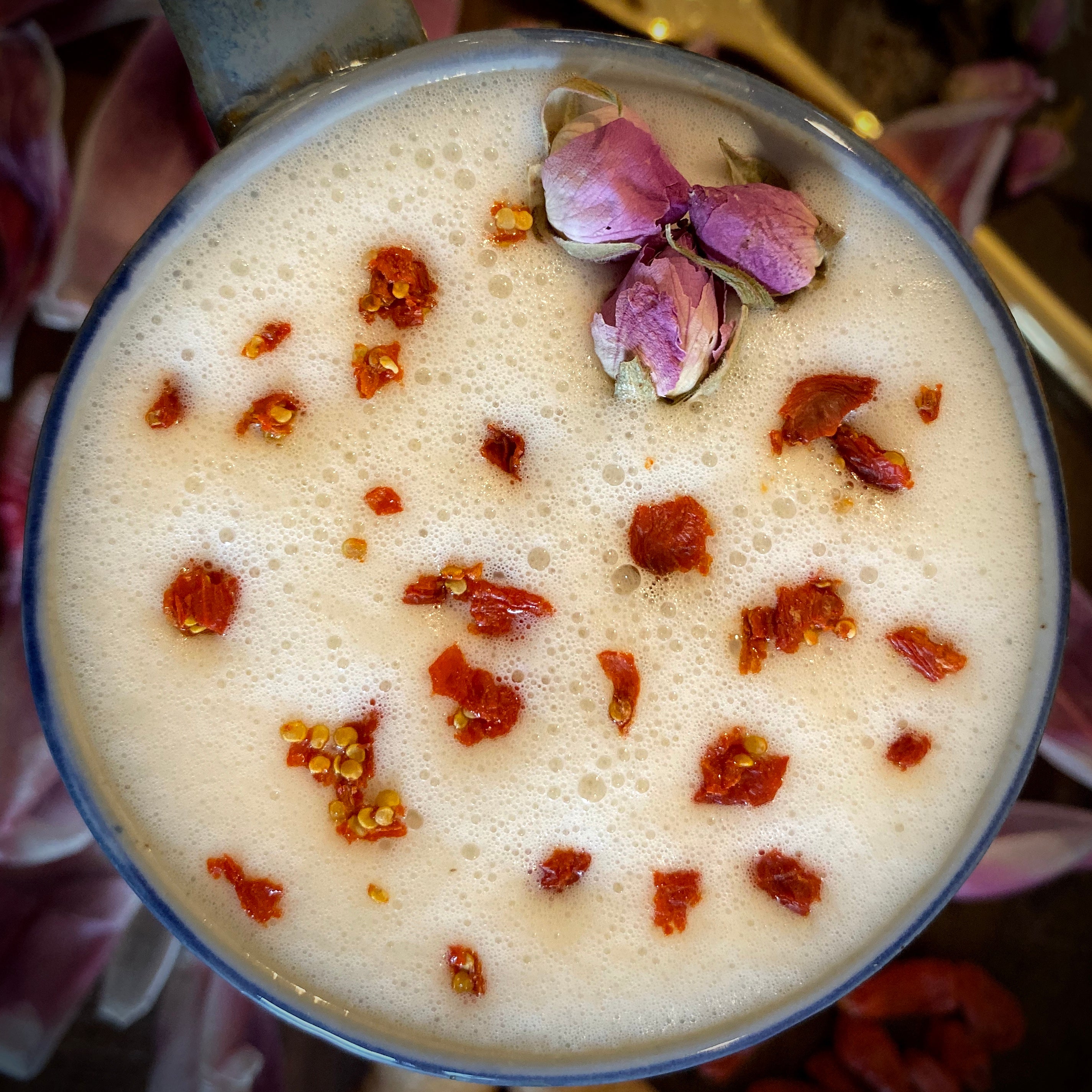October 22, 2019

As we move deeper into the autumn season, the foundation of our diet should be foods that are bountiful, local and ripe. Just as we rotate our wardrobe for the seasons, we should be rotating our diet as well. Most of us wouldn’t wear shorts and a tank top in the snowy winter, nor would we wear a heavy coat on a hot summer day. As such, we should reserve cold and raw foods for the warmer months, and eat warmer and cooked foods during the colder months.
When we think about the seasons, we can say that autumn is the time when nature begins to contract and move downward. Leaves and fruit begin to fall to the ground as sugar and sap move inward and down to the roots. Seeds fall to the ground and are self-planted into the soil. The days become shorter as we slow down and spend more time indoors. The food we eat now should reflect the contracting and downward nature that we see around us. That is, it should help pull energy inward as we need to conserve it for the months ahead.
Autumn food pairs well with slow-cooking methods. Slow-cooked stews and soups create warmth and should be the backbone of your diet. Slow-cooked bone broth is extra rich in gelatin, collagen, amino acids like proline and glycine as well as ample amounts of minerals. Now is a good time to get out the crockpot. Baking and roasting seasonal vegetables and meats create nourishing and warm meals. Freshly harvested fruits and vegetables can be pickled, canned or frozen and stored away for the winter.
Add dark green and golden-orange colored fruits and vegetables to your diet. These plants are high in carotenoids, a natural form of beta-carotene which boost the immune system. Algae, broccoli, cantaloupe, carrots, kale, mullein leaf, mustard greens, nettles, parsley, pumpkin, peas, squash, sweet potatoes, turnips, watercress and wheatgrass are just a few examples of foods that are high in beta-carotene.
According to 5 element theory, white or light-colored foods are associated with autumn and improve both lung and large intestine functions. Good examples of white foods are daikon, mushrooms, parsnips, potatoes and oats. Diary is ok as long as you are not prone to dampness. The color white pertains to whole foods. Refined sugar and flours are not included.
As the wind picks up and the air dries out we may suffer from dryness. Dryness manifests internally as constipation, and externally as skin maladies. Consuming foods that are moistening, rich in fiber cooked with a little salt will support the large intestine and protect it from dryness. A few examples of moistening foods include almonds, apples, barley, clams, crab, dairy products, eggs, herring, honey, millet, mushrooms, mussels, oysters, peanuts, pears, persimmons, pinenuts, pork, seaweed, sesame seeds, soy products and spinach.
Spicy and pungent foods are very beneficial this time of year, especially with pollen in the air and flu season right around the corner. Spicy foods loosen up mucus and cause your nose to run removing allergens and microbes. Pungent foods include cayenne pepper, chilies, garlic, ginger, horseradish, mustard, onion, radish, scallions, turnips, peppercorn and wasabi.
Sour foods assist with the idea of pulling energy inward. Sour fermented foods tend to be high in probiotics that support gut function and immune system. Examples include grapefruit, kefir, kimchi, lemon, lime, pickled vegetables, sauerkraut, sourdough bread, vinegar and yogurt.
Warm herbal teas help you stay hydrated and can be medicinal. I often make a pot of tea containing oolong, dried pear, dried apple, ginger and honey. It's very soothing and tastes refreshing. Seaweed broths are also moistening and contain minerals. As mentioned above, bone broth is fantastic because it's so nourishing. You can drink it on its own with a little Himalayan sea salt or add it to soups and stews.
Hara Hachi Bu is a Confucious teaching from Okinawa, Japan which roughly translates to, eat until you are 80% full. Gentle and short fasts comprised of seasonal fruits and vegetables can be done for those of us with robust bodies, but longer fasts are not recommended.
December 21, 2019 0 Comments
With a vast drop in temperature, darker skies and rainy days, winter is the most yin of all the seasons. It is associated with the kidney and bladder organs, the color black, the element water, the emotion fear, and salty and bitter flavors.
December 06, 2019 0 Comments

Goji berries are one of the most well known Chinese herbs in the US. Used for over 2000 years in China, they were first mentioned in the Shen Nong Ben Cao Jing, the oldest known book on Chinese herbs in 200 BC. They are prized for their ability to tonify blood and yin without causing stagnation. Consumed daily in China as a food and herbal medicine, goji berries are revered for their anti-aging properties. They are used in many beauty tonics.